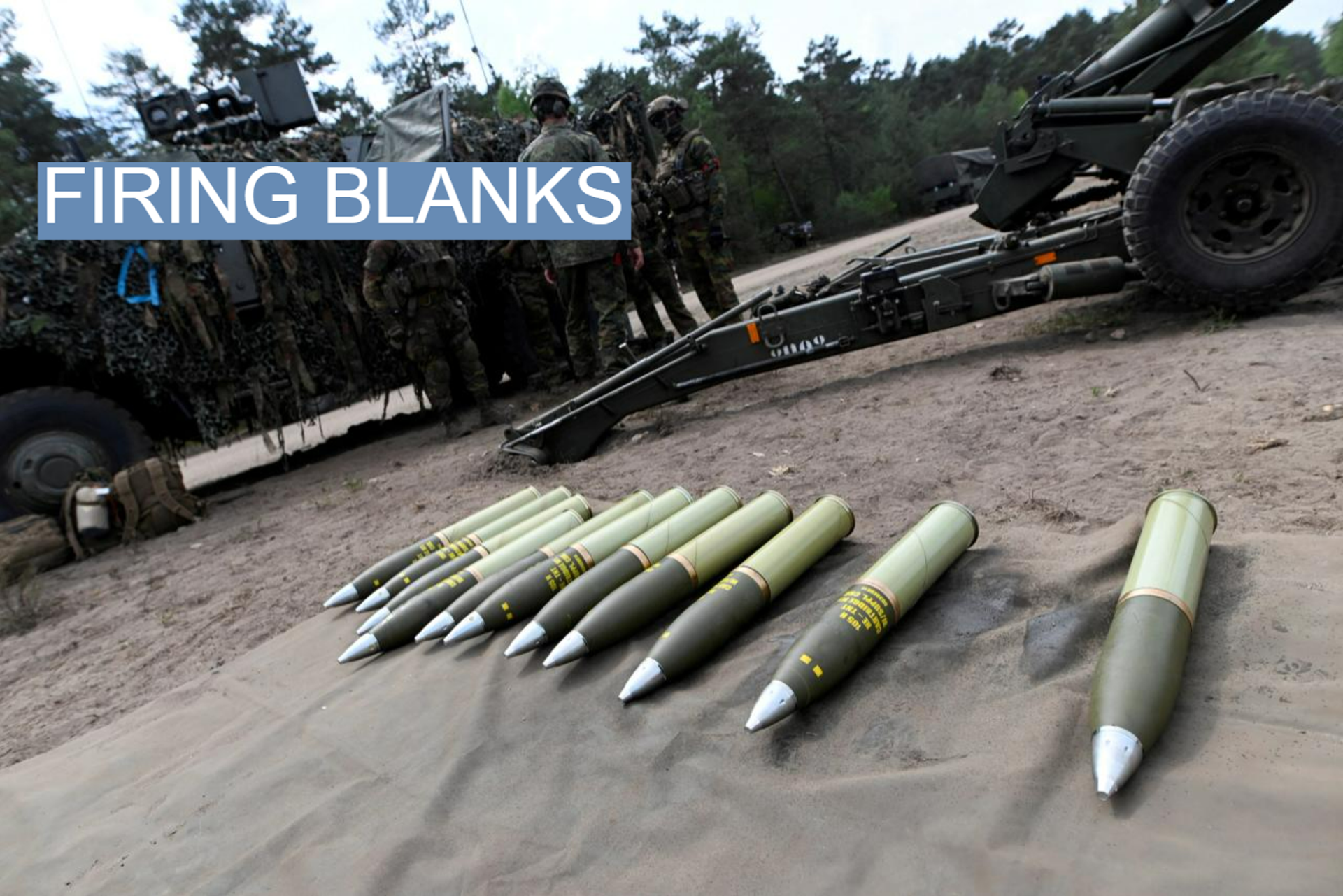The News
NATO Secretary General Jens Stoltenberg said this week that the alliance would revisit its target for ammunition production, raising concerns that Ukraine could soon face an ammunition shortage if supply rates do not increase.
Here’s a breakdown of why Europe and North America are seeing their stockpiles depleted faster than they can be replaced, and what they need to do to meet demand.

Know More
Historic Optimism
Perhaps the biggest reason for depleting stockpiles — particularly in Europe — is that manufacturers switched their production priorities after the Cold War as the threat of an attack from the Soviet Union and its allies evaporated.
Europe no longer anticipated a major land war, which resulted in decades of budget cuts and weapons stockpiles that were deliberately kept low. With a sudden increase in demand from Ukraine, those depleted levels are being drained.
COVID Bottlenecks
Despite risks from COVID-19 having receded, supply chain issues induced by the pandemic still linger, including for the defense sector.
Industries worldwide are still working to replace staff who left during the pandemic. In defense, shortages can be seen in skilled workers needed to operate the machinery or software required to put together ammunition, as well as among the truck drivers tasked with shipping components from one factory to another.
There is also a shortage of critical raw materials, the prices for which have skyrocketed, making it more difficult for contractors to source.
Bureaucratic Hurdles
Complicated contracts for defense production mean manufacturers experience delays navigating legal requirements.
In the U.S., for example, there are five plants largely responsible for bulk production of ammunition. They are all owned by the federal government but operated by separate private contractors, which has caused confusion on how the costs are divided when it comes to plant modernization and facility maintenance.
Red tape also has spurred confusion on the legal parameters for sending weaponry to Ukraine, notably in Europe, where paperwork has presented headache for countries seeking to deliver tanks to Ukraine.
Expert View
Marion Messmer, a senior research fellow at the Chatham House think tank in London, told Semafor that while the ammunition shortage is not an immediate problem, it could pose a serious issue for Ukraine in six to eight months.
She said that while NATO needs to bolster ammunition supplies immediately, allies also need to be proactive and begin looking at alternative weaponry they have in that could potentially be adapted and reutilized.
“Can we think of whatever the next best instrument or equipment is that we might want to send to Ukraine and start fixing up some of that now rather than once the decision has to be made?” Messmer said.
If the supply challenge is not met, Ukraine will need to begin looking at non-NATO countries who are also offering ammunition, she added, but this poses a significant challenge since different ammunition cannot be used across weaponry. Kyiv will need to make sure it are securing the same stock that is currently being provided for their machinery.
Still, she added that it is a good sign that the conversation on ammunition is being held now, which will give enough time for democracies to debate the most appropriate and sustainable way to boost production.
The View From Russia
While it is difficult to get a full picture of Russian ammunition stockpiles, U.S. officials believe that Moscow is also on the brink of facing a serious ammunitions shortage, with reports that the country has already begun to use ammo produced more than 40 years ago.
This assessment, however, is not universally accepted, with some European intelligence services arguing that the country has enough ammunition in reserves to potentially launch another offensive on Kyiv.
If there does prove to be a shortage, Russia will face significant hurdles in replenishing its supplies given extensive sanctions imposed by Europe and North America.
The View From South Korea
Seoul has so far refused to send lethal aid to Ukraine in an effort to not upset Russia, which maintains sizeable influence over North Korea.
But this line has softened over the last year given the country’s defense contracts with the United States and friendly relationships with NATO members.
In November, the U.S. said it would purchase over 100,000 rounds of artillery ammunition from South Korea, which officials said would eventually be shipped to Ukraine, despite Seoul emphasizing that they believed the end-users would solely be U.S. forces.
South Korea’s high-tech manufacturing capabilities means that the private arms industry has been flourishing, with the country providing state-of-the-art tanks and drones to countries like Poland, again under the official narrative that the technology would not be transferred.
Now What?
One concern that many experts have raised is that as Western allies’ stockpiles dwindle, they will have less ammunition worldwide for any future conflict.
Messmer told Semafor that one question a depleted stockpile raises is how much more dependent countries would become on their nuclear arsenal.
“We don’t want to necessarily have to rely on nuclear weapons more just because we have run out of conventional ammunition,” she said. “You want to be able to reserve that for a threat that requires that rather than just falling back on it because it’s your only option.”
Notable
- The ammo crisis is well documented by CNN, which recounts how officials began sounding the alarm about a potential shortage six months ago.